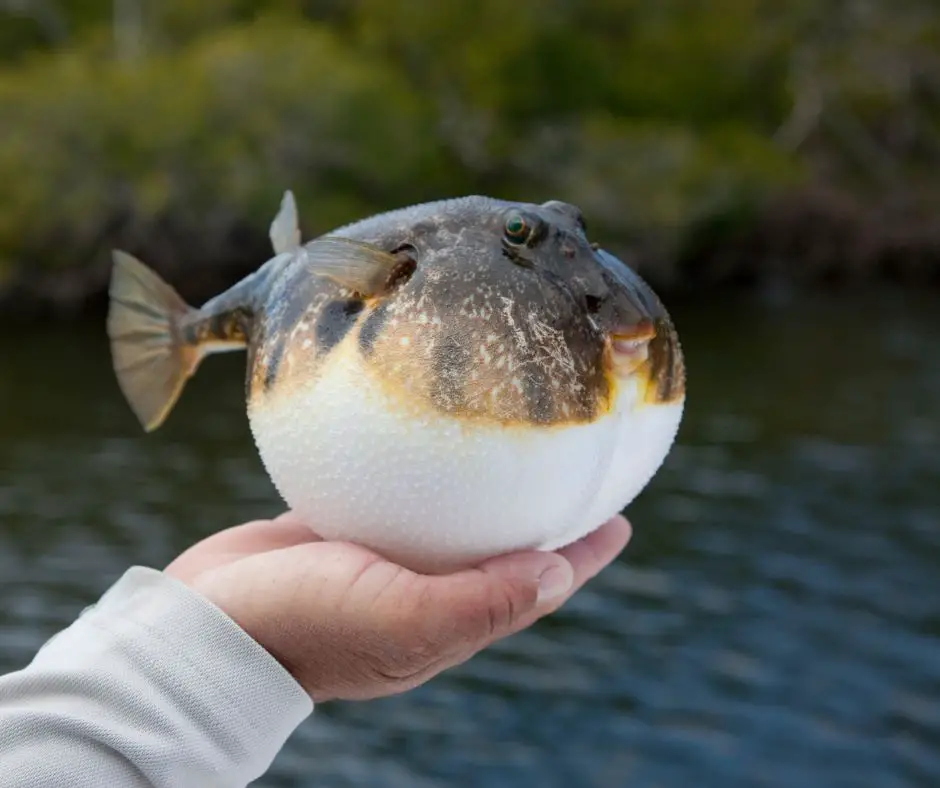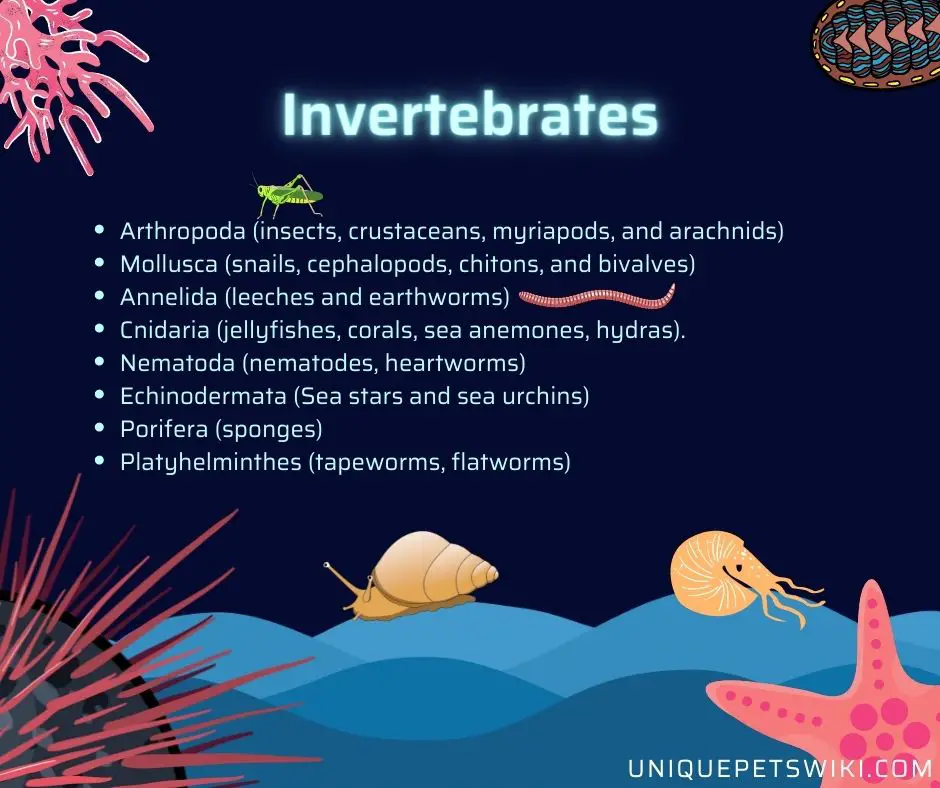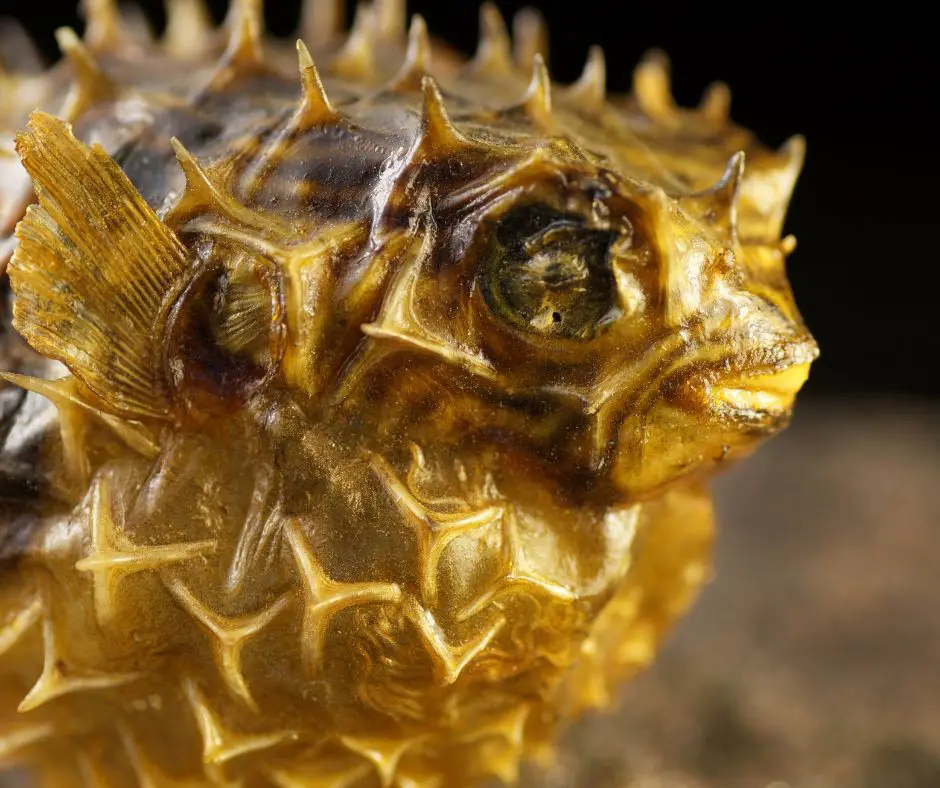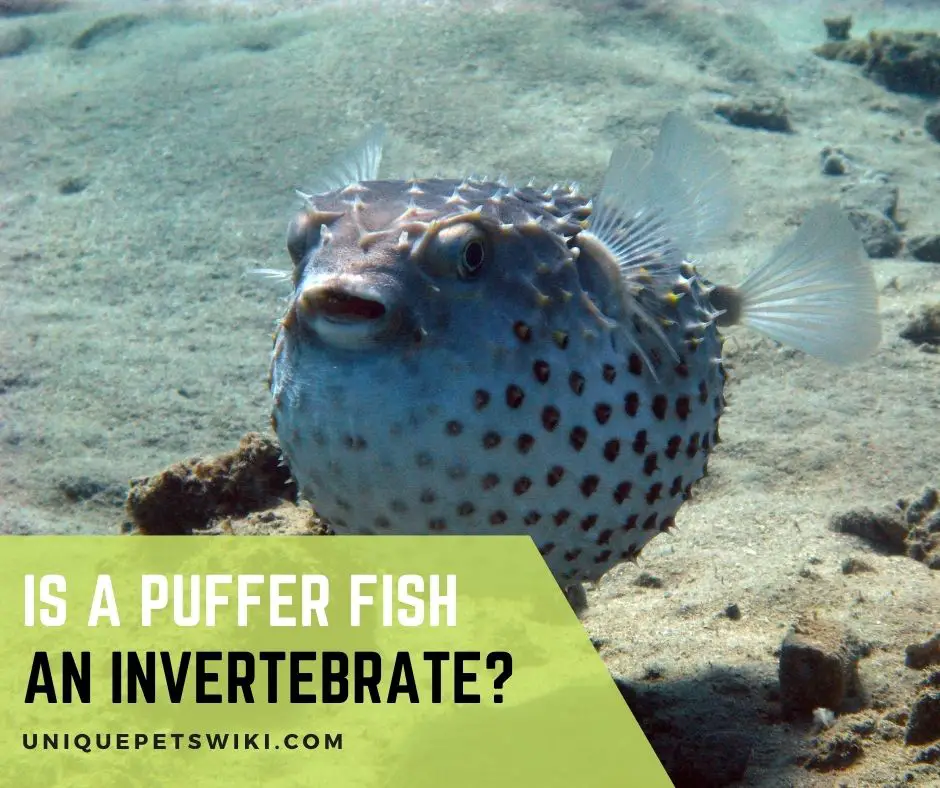The unusual appearance and inflating capacity of Pufferfish make them one of a kind. Knowing pufferfish facts is imperative for every puffer fish enthusiast to give these pets the necessary care.
If you can understand your animal pet well, you will know how to keep it happy. Please delve into the article to know if Pufferfish are invertebrates. You will also learn about pufferfish classification and a lot more.
Contents
Is a Puffer Fish an Invertebrate?
No, Pufferfish are not invertebrates but are vertebrate animals. All fish are aquatic and vertebrate creatures, and Pufferfish are no exception.
So, don’t think that Pufferfish are boneless because they inflate like a balloon. If you are familiar with pufferfish anatomy or have seen someone cleaning a pufferfish, you know they have bones.
Vertebrates have a vertebral column or backbone, but invertebrates don’t. The absence or presence of the vertebral column differentiates animals from these two categories.

What are Vertebrates?
Vertebrates comprise all organisms within the subphylum Vertebrata, the leading subphylum in the phylum chordate. For simplicity, these are chordates containing a backbone or vertebral column.
All vertebrates have a backbone, while all invertebrates lack this feature, which is the main trait that sets the two groups apart. There are nearly 50,000 species of living vertebrates, but they are categorized into nine different classes.
Five of the classes comprise fish, including hagfish, cartilaginous fish, lampreys, lobe-finned fish, and ray-finned fish. Mammals, birds, amphibians, and reptiles from the other four classes.
Also important to note is that some vertebrate fish are cartilaginous and others bony. As the name suggests, Cartilaginous fish contain a skeleton consisting of cartilage only.
Bear in mind that Pufferfish are the second most poisonous/toxic vertebrates globally, after the golden poison frog.
What Are Invertebrates?
In contrast to vertebrates, invertebrates are animals that don’t have any bones. They neither possess nor develop a backbone at any time in their life.
This group of animals dominates the world in numbers, constituting 97% of all animals. This means we have billions of these animals that it’s almost impossible to count them all.
Invertebrates comprise over 30 different phyla, each with different unique characteristics. Some phyla have one species, and others more than one. Some familiar examples of invertebrate phyla include:
- Arthropoda (insects, crustaceans, myriapods, and arachnids)
- Mollusca (snails, cephalopods, chitons, and bivalves)
- Annelida (leeches and earthworms)
- Cnidaria (jellyfishes, corals, sea anemones, hydras).
- Nematoda (nematodes, heartworms)
- Echinodermata (Sea stars and sea urchins)
- Porifera (sponges)
- Platyhelminthes (tapeworms, flatworms)

Do Pufferfish have a Backbone?
Yes, Pufferfish has a backbone. Pufferfish are a group of fish in the class of ray-finned fish from the chordate phylum.
The common traits of ray-finned fish include the presence of a backbone and jaws. And this means that their endoskeleton consists of bones. Moreover, these fishes have thin and bony fins.
The puffers’ skeleton doesn’t have ribs and pelvic fins and contains fused bones in the jaw and cranium. Some of these species have dermal spines that are erect when they are puffing to ward off predators.

What are Puffer Fish Spines Made of?
In addition to having a vertebral column or backbone, Pufferfish come with spines developed from their scales.
Pufferfish spines are made of protein (collagen), nanocrystalline hydroxyapatite, and water. These are the same materials found in scales.
Technically, pufferfish spines are modified scales. The spines emanate during development from the skin’s mesoderm layer.
These spines serve as anti-predator defense, and they become apparent during Pufferfish’s characteristic puffing behavior.
Does a Puffer Fish Skeleton Expand?
No, the pufferfish skeleton does not expand, and they lack a pelvis and some ribs, allowing them to become ball-shaped without breaking any bones. Pufferfish stomach is stretchable, which is why you see them inflating.
They inflate by swiftly filling their stomach with water or, in some cases, air when threatened to intimidate predators.
As a matter of fact, puffers have a large stomach that folds back by itself within an enlarged cavity in the peritoneum.
Filling the stomach with water expands into the perineal space and unfolds itself to fill gaps beneath the dorsal, anal fin, head, and caudal peduncle. Eventually, the puffer balloons and the spines stick out.
Likewise, the dermis layer of Pufferfish has numerous collagen fibers that allow the skin to expand by 40%. The fish becomes a stiff and tight balloon which is incredibly unattractive to predators.
What is Puffer Fish Classified as?
Pufferfish’s scientific name is Tetraodontidae, which translates to four-toothed. The name represents the four front teeth that stick out from the puffers’ mouths.
The teeth are fused with the jaw, and they converge to form a beak-like dentition, enhancing crunching into hard prey like mollusks exoskeleton. The pufferfish taxonomy is tabulated below.
| Kingdom | Animalia |
| Phylum | Chordata |
| Sub-phylum | Vertebrata |
| Class | Actinopterygii |
| Order | Tetraodontiformes |
| Sub-order | Tetraodontoidei |
| Family | Tetraodontidae |
| Sub-family | Tetraodontinae |
| Genus | Sphoeroides |
Wrapping Up
Puffers have a stretchy stomach and skin, allowing them to puff up by swallowing as much water as possible to appear big to predators. They inflate to form a hard, stiff, and tight sphere with spikes to discourage predators from eating them.
Even though Pufferfish can balloon themselves, their body is not without bones. Puffers are vertebrates, except that they lack some ribs and pelvic fins.
These fishes also have spines that stick out after puffing up. Their fins are bony, and they have a very powerful jaw. Pufferfish have beak-like teeth that they use to crunch hard shells.
